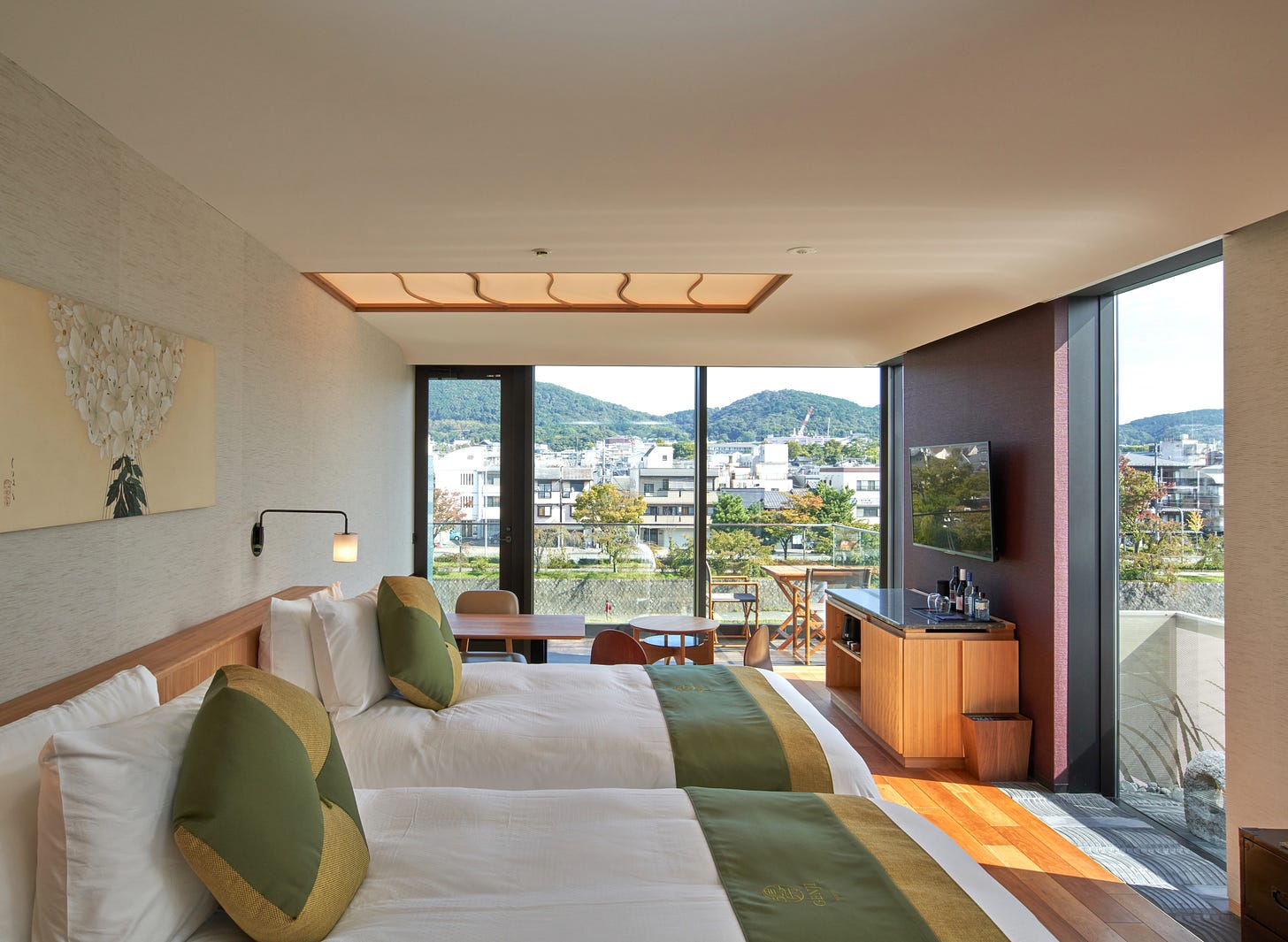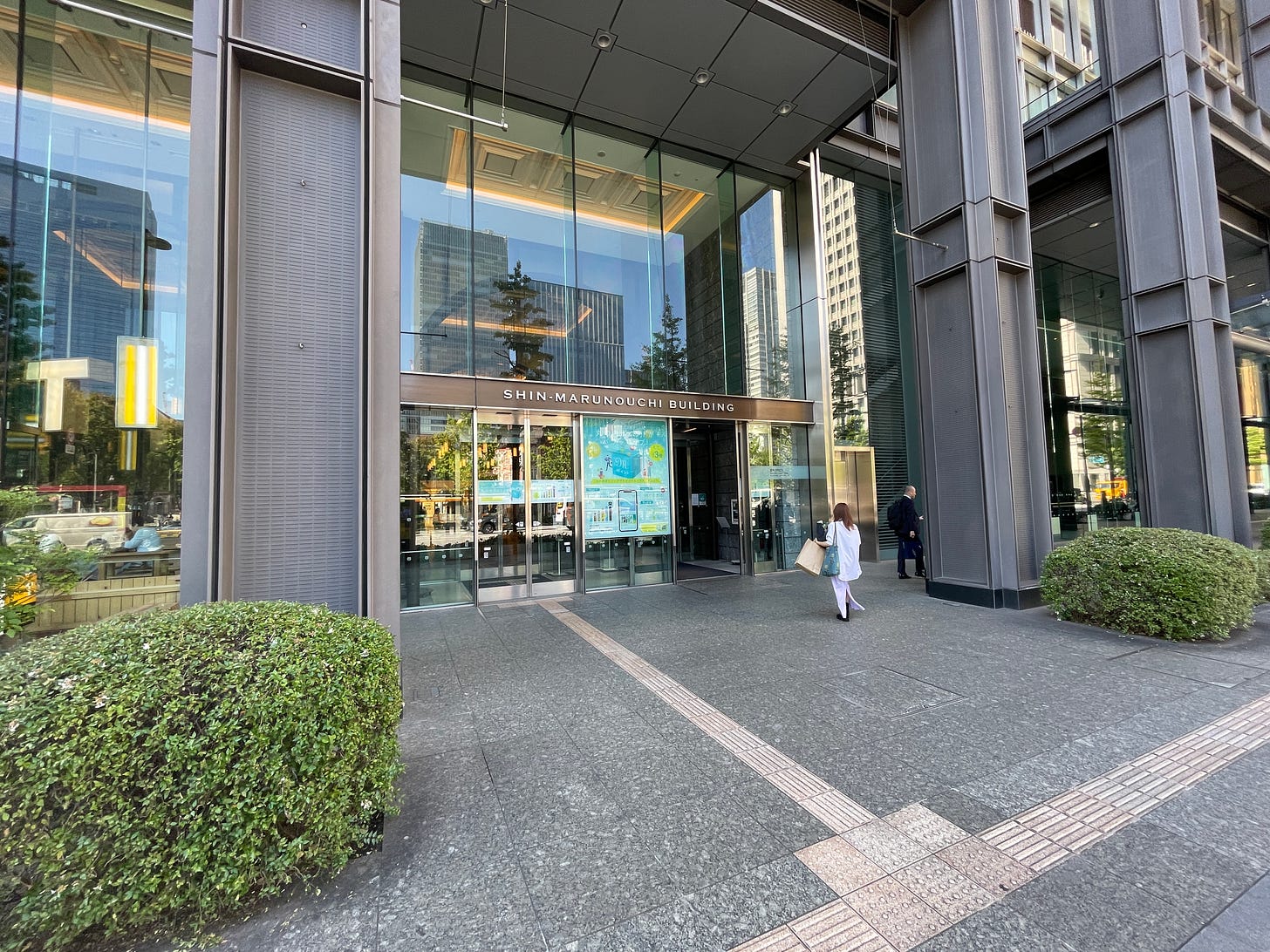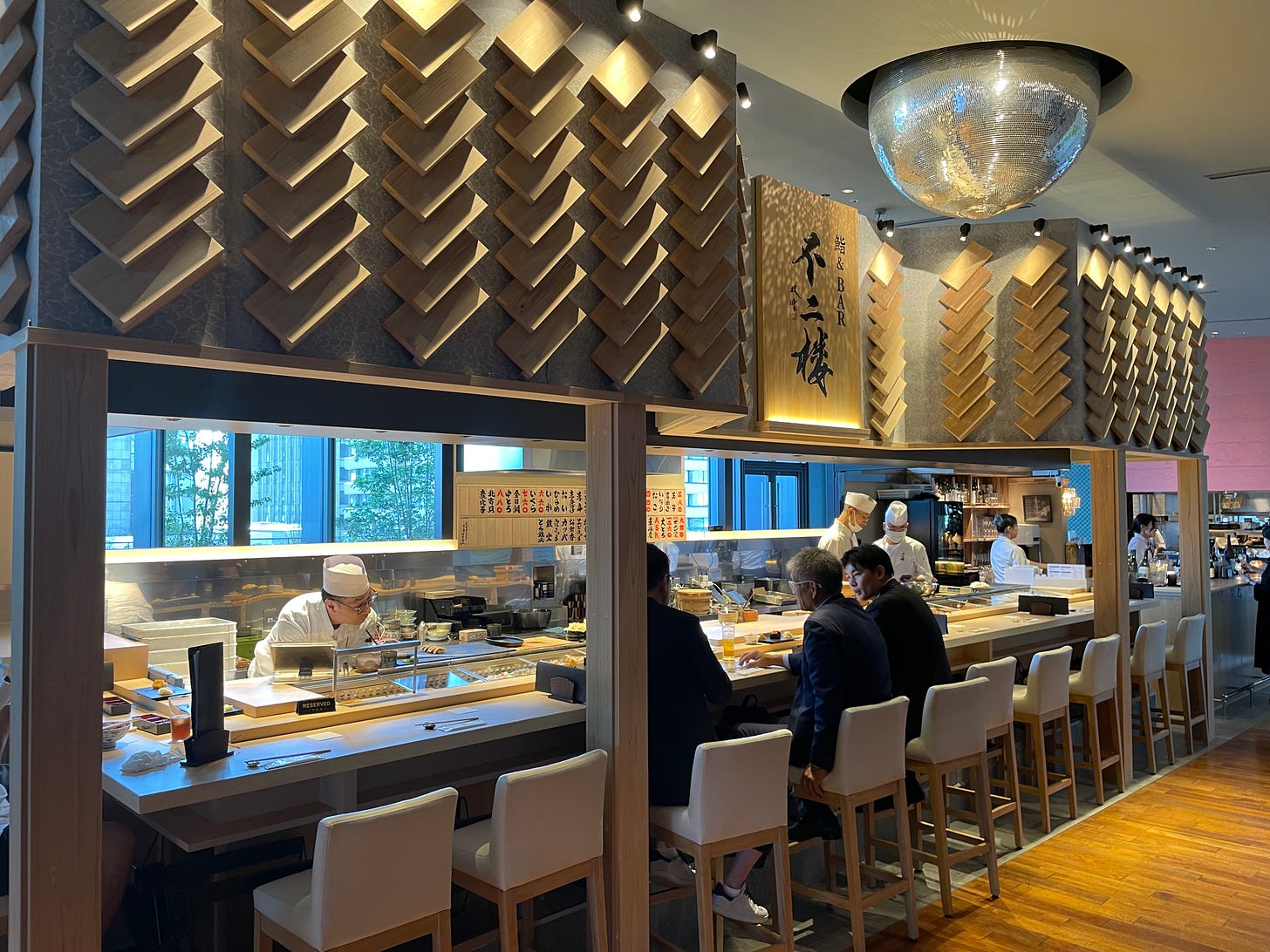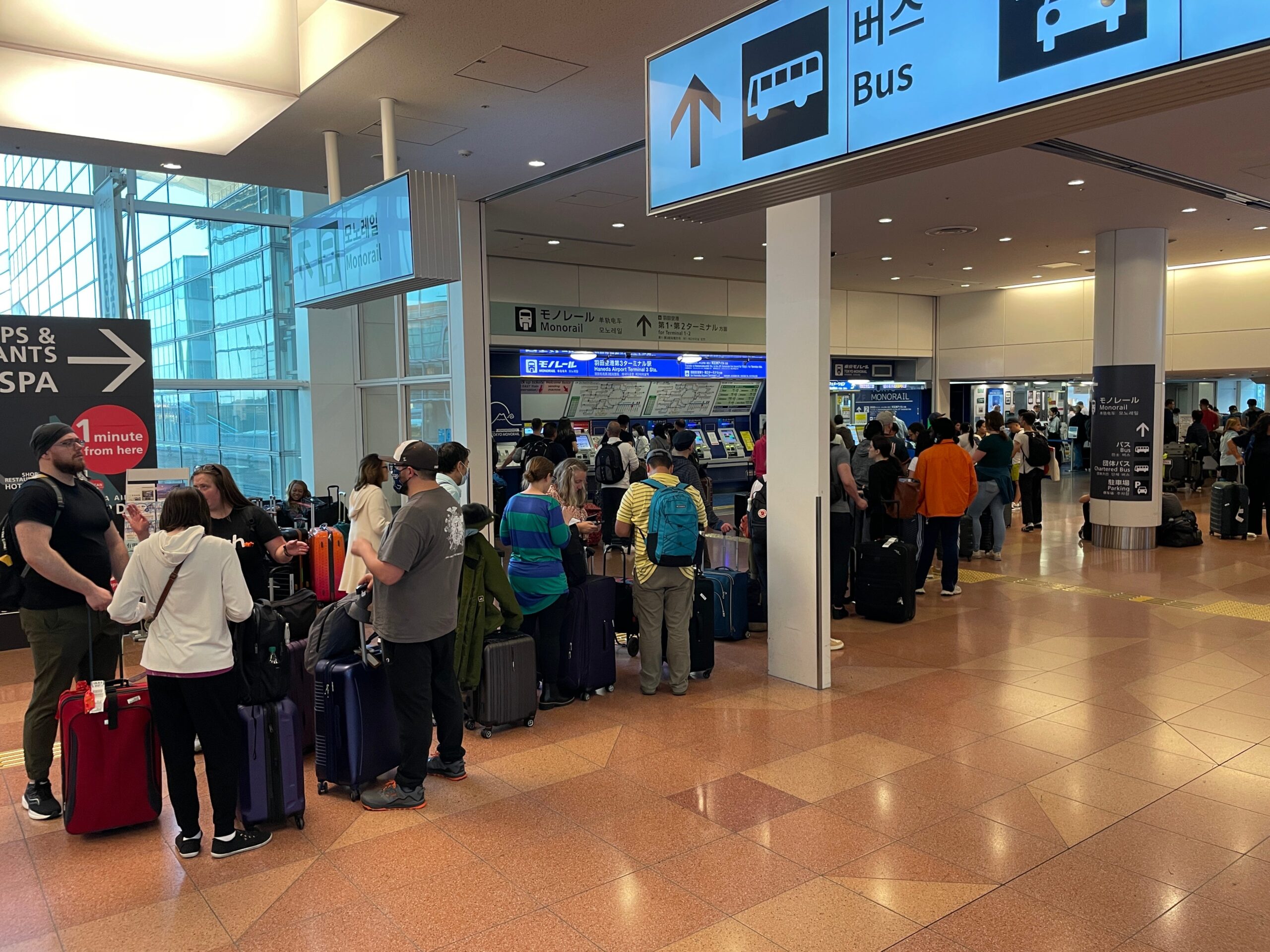Line for Welcome Suica machine at Haneda Airport in mid-October 2023
You Didn’t Travel All the Way to Japan Just to Wait in Line
If you’ve been to Japan recently, you know that crowds are becoming a serious problem. In mid-October of 2023, there were already huge lines at ticket machines and counters in train stations in Japan, as well as at JR offices and Welcome Suica machines at Haneda and Narita airports. In November and April, it’s going to be crazy. But don’t despair: I’ve figured out the best ways to avoid ever having to wait in these long lines.
An iPhone with a Digital IC Card is the Killer Japan Travel Hack
I recently discussed ways to avoid waiting in lines in an article on Japan travel hacks on InsideKyoto. I explained how you can avoid waiting in train ticket lines at Haneda and Narita by getting a Suica IC card before arriving in Japan and using it to pay for a train into the city. Sadly, it’s now nearly impossible to get Suica cards online before going to Japan.
Luckily, if you have an iPhone, you don’t need a physical card: you can install a digital Suica card (or digital Icoca card) on your iPhone in Apple Wallet. And you can do it before you arrive in Japan. This allows you to get off the plane and breeze into Tokyo without waiting in any lines (except for the inevitable line at immigration). At Narita, you can use the digital IC card to go through the turnstile for the Narita Express, then use the same digital IC card to buy the express ticket (tokkyu-ken) from a machine on the platform. There are usually no lines for these machines. At Haneda, the digital Suica will cover the full fare from the airport to the city on either the Keikyu Line or the Tokyo Monorail.

Best of all, you can use your digital IC card to pay for all your other small purchases in Japan: taxis, convenience stores, many restaurants and shops, coin lockers, vending machines, even some accommodations. And they work all over Japan (ie, they are not city-specific). Of course, there’s some fine print, which I’ll include at the end of this newsletter.
However, there is one big problem: You cannot use an IC card (digital or physical) to ride the shinkansen. But, there may be a way. Read on…
Smart EX Shinkansen Ticket App

SmartEX is an app that allows you to buy tickets on the Tokaido, Sanyo and Kyushu shinkansen lines. These lines run from Tokyo west across Honshu and down into Kyushu, with stops in places like Kyoto, Osaka, Kobe and Hiroshima, so they’re the main lines of interest to travelers. You can pick up the tickets that you buy with the app at ticket machines, so you can skip the lines at ticket counters, but the lines for machines can be long. However, you can avoid those lines if you can link SmartEX to a digital IC card (digital Suica or Icoca).
The problem is, many (if not most) foreign credit cards won’t work with SmartEX. But some do. Read the fine print at the end of this newsletter for more details.
Link SmartEX to Your Digital IC Card and Forget Waiting in Line (but note some important fine print)
As noted above, an IC card (digital or physical) by itself cannot be used to pay for rides on the shinkansen. However, SmartEX gives you the option of linking a digital IC card to your SmartEX account, so all your shinkansen ticket purchases will be stored on your digital IC card. Thus, you don’t have to pick up your tickets at a machine. Instead, you can ride the shinkansen merely by tapping your iPhone on the turnstile. The shinkansen turnstile reads the digital IC in your phone that “holds” your SmartEX shinkansen ticket. So, voila! You never have to wait in line at a ticket counter or ticket machine. Here’s a picture of me of me using my iPhone with a digital IC card linked to SmartEX to ride the shinkansen from Kyoto to Shin-Osaka. Note that there’s no physical ticket—I’m just tapping my iPhone on the reader in the turnstile. And, if you’re in a reserved seat, the turnstile prints out a seat information ticket that you grab as you pass through the turnstile.

I know it sounds complicated—and I definitely expected alarms to sound when I tested this system myself recently—but it works like a charm.
Genji Kyoto: A Boutique Sanctuary in an Amazing Neighborhood
I recently stayed a few nights in the wonderful Genji Kyoto hotel. It’s located right beside the Kamo-gawa River and some of the rooms have private balconies where you can enjoy the view. The neighborhood around the Genji is amazing: it’s filled with cool little shops, restaurants and cafes, and it’s only a short walk to downtown and Kyoto Station. The best thing is the breakfast—especially the Japanese breakfast—which is a healthy way to start the day.


The Makanai: The Perfect Way to Get Psyched for Kyoto

If you’re looking for a show to get you in the mood for Kyoto, you’ll love The Makanai on Netflix. It’s about a young lady who moves to Kyoto to become a maiko, but instead winds up working as the cook for a geisha house. It’s a Japanese production and it’s authentic as it gets. I watch it with my wife, who’s from Kyoto, and she loves it. The language is pure Kyoto-ben (Kyoto dialect) and if you’ve been to Kyoto, you’ll recognize lots of sights from the Miyagawa geisha area and other parts of the city.
Shin-Marunouchi Building: A Great Place to Eat Near Tokyo Station

If you’re looking for a place to eat near Tokyo Station, you’ll be spoiled for choice at the Shin-Marunouchi Building, which is just across the street from the Marunouchi side of the station. There are two basement restaurant floors and three more on floors 5 through 7. All the standard Japanese cuisines are available, along with French, Italian, Chinese and Thai. I really like Sushi & Bar Fujiro (pictured below), which is an approachable spot for good sushi. Check out the full list of restaurants (use the translation function of your browser). There’s a beautiful outdoor seating area for warm months. Just keep in mind that the Shin-Marunouchi Building is prime office space and the patrons dress pretty smartly—you’ll feel quite out of place in shorts or sloppy attire (smart casual will be fine).

The Fine Print for Digital IC Cards and SmartEX
Digital IC Card: In principle, you can only add a digital IC card (Suica or Icoca) if you have a MasterCard or American Express card linked to your Apple Wallet. But, not all MasterCards or Amex cards can be linked with Apple Wallet. Check with your bank or card provider. I have also heard that Apple Cards can be used with digital IC cards. If you don’t have a usable MasterCard or Amex Card and don’t feel like getting an Apple Card (which is only available to Americans), there is a workaround: if you have a physical Suica or Icoca card, you can import it into your iPhone and you won’t need a credit card. Since physical Suicas are impossible to get now, you would need a physical Icoca card. You can get these after arrival in Kansai (Kyoto, Osaka, Kansai Airport, etc). You can then top up your digital Icoca with Japanese cash at train stations and 7-11 convenience stores in Japan. A digital Icoca card works exactly the same as a digital Suica, and in all the same places. Note, you cannot import a Welcome Suica or Pasmo Passport into an iPhone.
SmartEX: This is the fiddlier issue. In order to use SmartEX, you need to link it with a credit card. The problem is, many (if not most) foreign credit cards won’t work with SmartEX. In my case, I tried two foreign Visa cards and MasterCard and neither worked. I finally was able to link my Japanese Visa card, but that probably does you no good. I have heard that some foreign credit cards work, including some Amex cards, but I have not confirmed this. If anyone has success with a non-Japanese credit card, please let me know in the comments.
Final Point: Don’t try too hard with SmartEx. A digital Suica or Icoca is the more important of the two apps described here. You can use your digital Suica or Icoca for subways, local trains, taxis, restaurants and just about everything else. For shinkansen tickets, you can go to ticket offices early or late in the day, or just look for shinkansen ticket machines that don’t have long lines (usually possible to find). Or, if you have a Japan Rail Pass, you can use the excellent JR online booking system (which is an argument in favor of getting a pass despite the increase prices).

